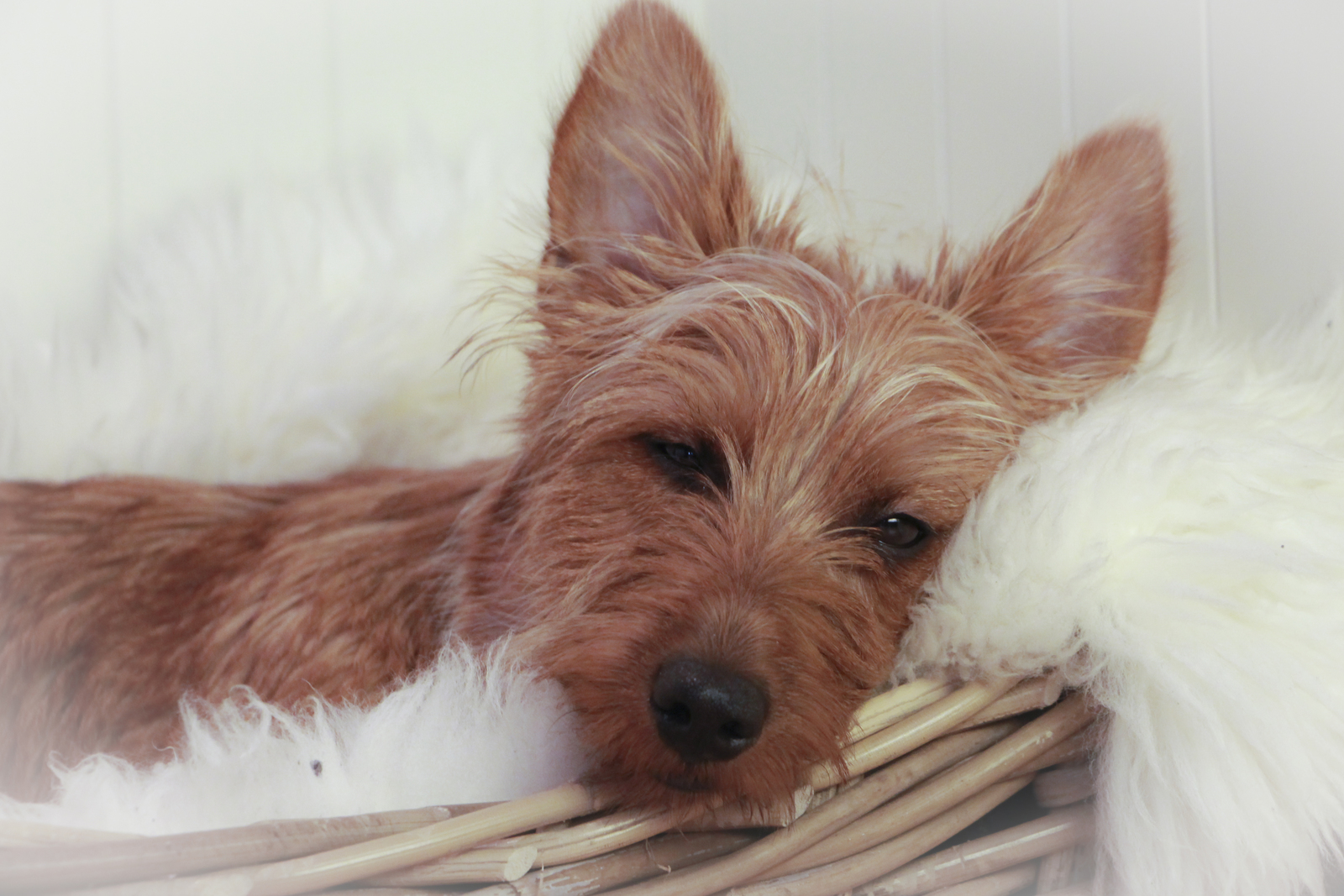Training your Australian Terrier sets the foundation for a happy, well-behaved companion in your home. These small but energetic dogs are intelligent and eager to learn, making them rewarding pets for those willing to put in the time.
The right guidance and consistent effort will help you bring out the best in your Australian Terrier. With a positive approach and patience, you can make the training process both effective and enjoyable for you and your dog.
1. Start training early to take advantage of puppy developmental stages
- You should start training your Australian Terrier as early as possible. The first few months of life are when puppies are most open to learning new routines and behaviors. This period helps shape their future personality and habits.
- During the early weeks, your puppy’s brain is developing fast. Early training uses this natural growth to teach basic commands, social skills, and house rules. Waiting too long can make some lessons harder for your dog to understand.
- Experts recommend beginning simple training between 8 and 16 weeks of age for best results. Early exposure to rules and positive experiences can help prevent unwanted behaviors as your terrier grows older. For more details about the benefits of early puppy training, visit this puppy training timeline guide.
- Starting young helps your Australian Terrier get used to you, your home, and the world. It also makes things like vet visits, grooming, and meeting strangers less stressful. You can read more about the importance of a puppy’s first months and training in this article on essential developmental stages.
2. Use positive reinforcement with treats
When training your Australian Terrier, positive reinforcement is one of the best ways to encourage good behavior. This method uses rewards to help your dog learn what you expect. Treats are a simple and effective reward. Choose small, tasty, and easy-to-chew treats.

3. Incorporate basic commands: sit, stay, come, and heel
- Teaching your Australian Terrier basic commands gives you more control and helps keep your dog safe. Commands like “sit,” “stay,” “come,” and “heel” are essential and form the foundation for good manners.
- Start with “sit” by holding a treat above your dog’s nose and moving it back gently. As your dog follows the treat, their bottom should touch the ground. Give the treat and use the word “sit.” Practice this for short periods each day.
- For “stay,” ask your Australian Terrier to sit, then hold your hand out with your palm facing them. Say “stay” in a firm but calm voice. If your dog remains in place for a few seconds, reward them right away. Gradually increase how long you expect your dog to stay.
- The “come” command helps your terrier return to you quickly, which is important for safety. Call your dog’s name followed by “come.” Use a happy voice and give treats when your dog comes to you. Repeat this in many places and always reward a fast response.
- “Heel” teaches your Australian Terrier to walk calmly by your side without pulling. Start with your dog at your left side, say “heel,” and begin walking. Give treats or praise when your dog stays by you. If they pull ahead, stop and wait for them to return to your side.
- Practice these commands daily with short, positive sessions. Consistency and patience are key for this breed. For a step-by-step guide, you can review these basic dog commands.
- Clear commands and regular training boost your Australian Terrier’s confidence and make your daily routine easier. Teaching these basic skills also helps your dog become a polite companion at home and in public.
4. Socialize your terrier with calm people and other pets
- Start socialization early to help your Australian Terrier feel more comfortable around new people and animals. This breed can be spirited and bold, so gentle exposure to calm people and pets is important for building confidence.
- Use positive reinforcement like treats or praise when your terrier reacts calmly during new interactions. Controlled, short introductions work best at first.
- Arrange playdates with other well-behaved dogs and visit different environments to help your terrier get used to a variety of sights, sounds, and smells. Calm experiences reduce the risk of fear or aggression around others.
- Practice patience while socializing. Every Australian Terrier has a unique personality, so progress may be slow at times. Stay consistent and avoid forcing your dog into overwhelming situations.
- Proper socialization can help prevent behavior problems, such as anxiety or aggression, in new places or with unfamiliar faces.
5. Enroll in puppy training classes for structured learning
Structured classes help your Australian Terrier learn basic commands and proper manners in a controlled setting. Trainers show you how to teach sit, stay, come, and walk on a leash. The lessons make it easier to stay consistent and develop good habits at home. Your puppy will also get used to being around other people and dogs. This social experience is important because Australian Terriers can sometimes be wary of strangers or unfamiliar animals. Classes create a safe place for your puppy to build confidence.
6. Use clicker training to mark desired behaviors accurately
Clicker training is a simple way to help your Australian Terrier learn faster. You use a small device, called a clicker, that makes a sharp sound. Every time your dog does the right behavior, you press the clicker. The click tells your dog the exact moment they did something you want. You should always follow the click with a reward, such as a treat or praise. This makes it clear which behavior is getting rewarded, speeding up the learning process.
7. Be consistent with commands and daily routines
Consistency is key when training your Australian Terrier. Using the same words and signals for each command helps your dog understand what you expect. This reduces confusion and makes learning faster. Stick to a set schedule every day for feeding, walks, and training. Dogs thrive on routine, and a predictable pattern helps them feel safe and secure. Simple routines build good habits over time, making it easier for your Australian Terrier to listen and follow instructions.
8. Avoid harsh punishments to maintain trust
Using harsh punishments with your Australian Terrier can damage the trust between you and your dog. Trust is important because it helps your terrier feel safe and willing to learn from you. When trust is broken, it becomes harder for your dog to listen and follow your guidance. Australian Terriers respond well to positive training methods. Instead of harsh discipline, use gentle correction and rewards to guide their behavior. Praise good actions, offer treats, and use kind words. This approach encourages your dog to repeat the behaviors you want.
9. Engage your terrier in dog sports to channel energy
Australian Terriers are energetic and active dogs. Dog sports are a great way to help them use up their energy in a positive way. Activities like agility courses or basic obstacle training work well for this breed. These sports challenge both the body and mind. Aussie Terriers love having a job to do, so setting up short training sessions or agility runs can keep them focused and happy. This also helps prevent boredom, which often causes unwanted behaviors.
10. Expose your dog to various sounds and environments
Take your Australian Terrier to different places so they can experience new sights and smells. Start with quiet spots, like a calm park, and slowly work up to busier areas. This step-by-step method helps your dog gain confidence without becoming overwhelmed. Let your dog hear a variety of noises, such as traffic, doorbells, and children playing. Playing recordings of sounds at home can help your Australian Terrier get used to unfamiliar noises in a safe setting.



